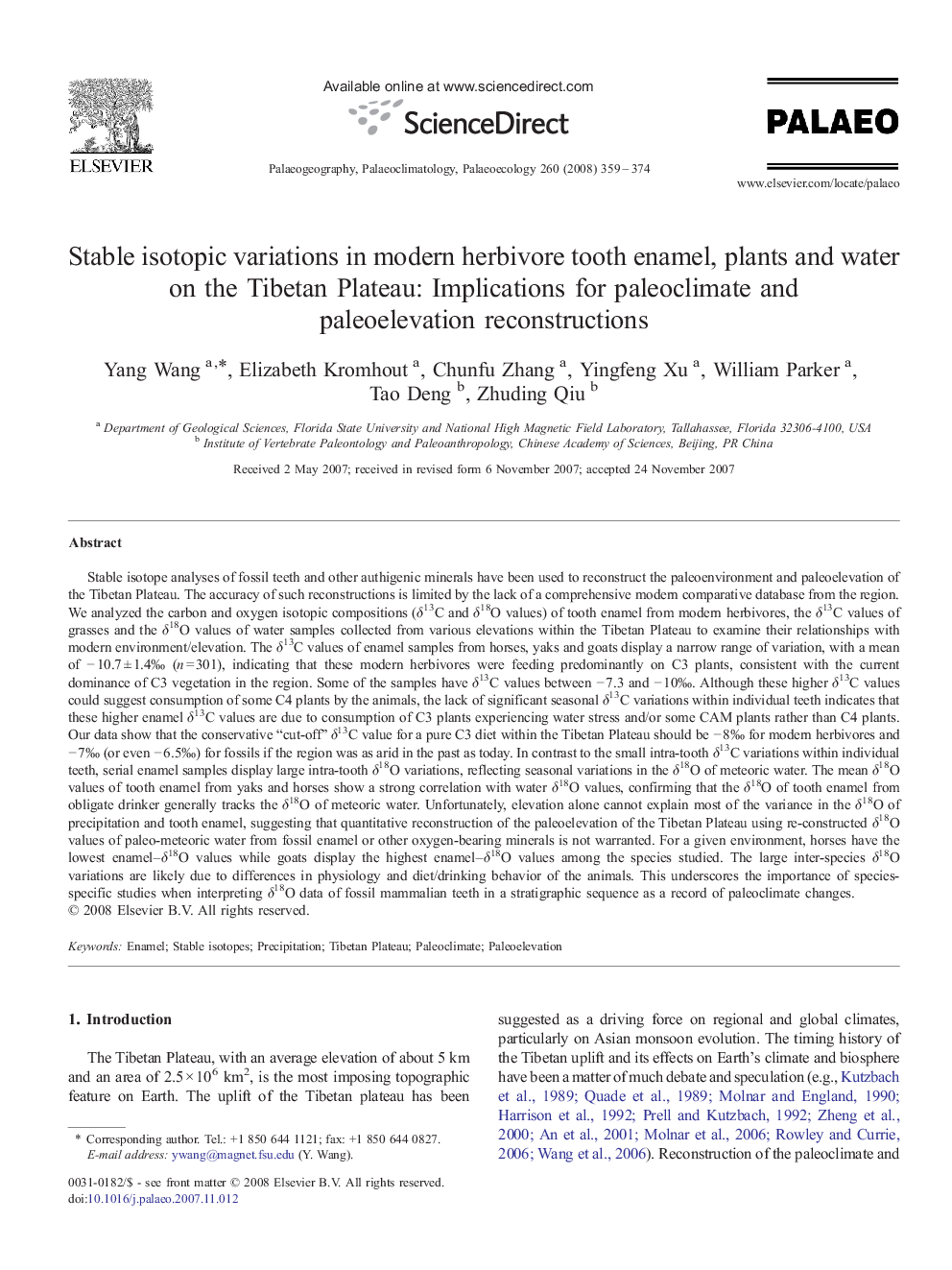| کد مقاله | کد نشریه | سال انتشار | مقاله انگلیسی | نسخه تمام متن |
|---|---|---|---|---|
| 4468558 | 1622333 | 2008 | 16 صفحه PDF | دانلود رایگان |

Stable isotope analyses of fossil teeth and other authigenic minerals have been used to reconstruct the paleoenvironment and paleoelevation of the Tibetan Plateau. The accuracy of such reconstructions is limited by the lack of a comprehensive modern comparative database from the region. We analyzed the carbon and oxygen isotopic compositions (δ13C and δ18O values) of tooth enamel from modern herbivores, the δ13C values of grasses and the δ18O values of water samples collected from various elevations within the Tibetan Plateau to examine their relationships with modern environment/elevation. The δ13C values of enamel samples from horses, yaks and goats display a narrow range of variation, with a mean of − 10.7 ± 1.4‰ (n = 301), indicating that these modern herbivores were feeding predominantly on C3 plants, consistent with the current dominance of C3 vegetation in the region. Some of the samples have δ13C values between − 7.3 and − 10‰. Although these higher δ13C values could suggest consumption of some C4 plants by the animals, the lack of significant seasonal δ13C variations within individual teeth indicates that these higher enamel δ13C values are due to consumption of C3 plants experiencing water stress and/or some CAM plants rather than C4 plants. Our data show that the conservative “cut-off” δ13C value for a pure C3 diet within the Tibetan Plateau should be − 8‰ for modern herbivores and − 7‰ (or even − 6.5‰) for fossils if the region was as arid in the past as today. In contrast to the small intra-tooth δ13C variations within individual teeth, serial enamel samples display large intra-tooth δ18O variations, reflecting seasonal variations in the δ18O of meteoric water. The mean δ18O values of tooth enamel from yaks and horses show a strong correlation with water δ18O values, confirming that the δ18O of tooth enamel from obligate drinker generally tracks the δ18O of meteoric water. Unfortunately, elevation alone cannot explain most of the variance in the δ18O of precipitation and tooth enamel, suggesting that quantitative reconstruction of the paleoelevation of the Tibetan Plateau using re-constructed δ18O values of paleo-meteoric water from fossil enamel or other oxygen-bearing minerals is not warranted. For a given environment, horses have the lowest enamel–δ18O values while goats display the highest enamel–δ18O values among the species studied. The large inter-species δ18O variations are likely due to differences in physiology and diet/drinking behavior of the animals. This underscores the importance of species-specific studies when interpreting δ18O data of fossil mammalian teeth in a stratigraphic sequence as a record of paleoclimate changes.
Journal: Palaeogeography, Palaeoclimatology, Palaeoecology - Volume 260, Issues 3–4, 14 April 2008, Pages 359–374